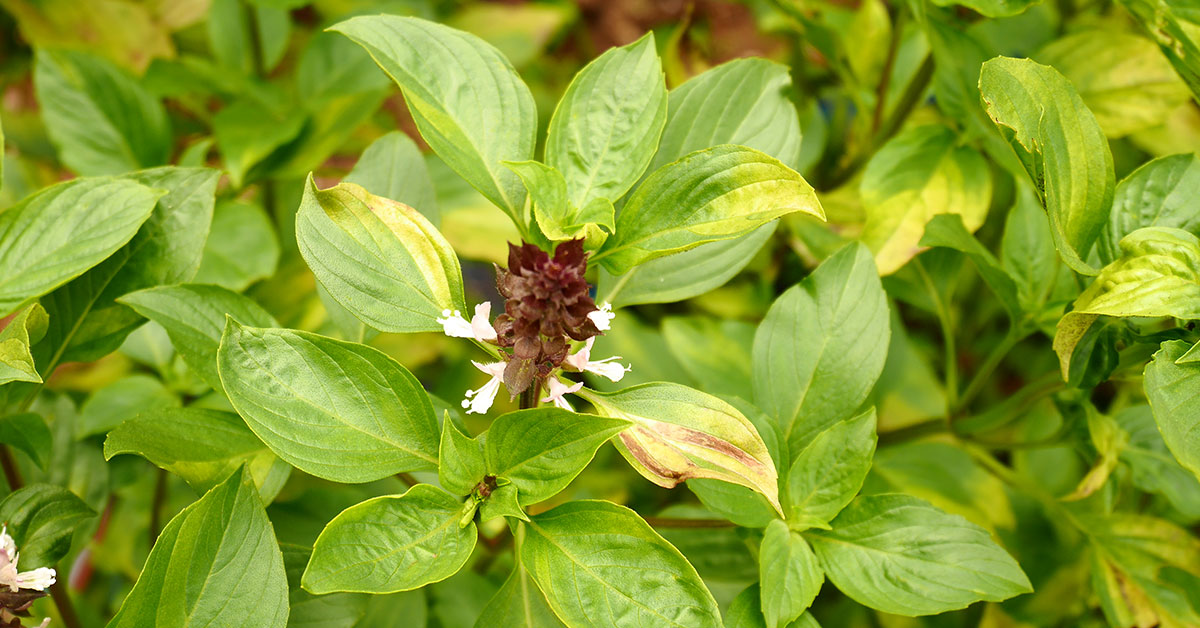Basil is a popular herb with a distinct flavor and aroma, used in many dishes and cuisines around the world. It’s hands-down one of my favorite herbs to grow. I always make sure to have at least a few different varieties of basil in my garden every year. But what many people don’t know is that basil leaves can turn yellow if they aren’t properly cared for. We will explore the reasons why your basil is turning yellow, and what you can do to prevent it. We’ll also look at how to revive yellow basil leaves and what to do if they are beyond saving.
Growing Basil In The Right Conditions
Basil leaves turning yellow is a common problem for many gardeners. This is often caused by a combination of environmental factors, pests, and diseases. Too much direct sunlight and heat can cause the leaves to turn yellow, as can water stress from either too little or too much water. Fungal diseases, including powdery mildew and downy mildew, can also cause the yellowing of basil leaves. Pests, such as aphids and whiteflies, can also attack basil plants, causing them to turn yellow.
Basil is an aromatic herb that is easy to grow in the garden. It prefers full sun and well-drained soil with a pH between 6.0 and 7.5. It should be watered regularly, but it does not tolerate standing water. The soil should be kept moist but not soggy. Mulching with organic material such as straw can help to keep the soil moist and cool. Fertilize the basil with a balanced fertilizer every few weeks during the growing season. Harvesting basil can be done by cutting the stem just above a set of leaves. This will encourage the plant to produce more stems and leaves.
How To Prevent Basil Leaves From Turning Yellow
Pruning basil is an effective way to prevent yellowing leaves and keep the herb looking healthy and vibrant. Pruning involves cutting off any older, yellowing leaves from the stem. This encourages the growth of new, healthy leaves and keeps the basil from becoming woody. Pruning also helps to keep the basil from becoming overly leggy and prevents it from becoming overcrowded, which can lead to the yellowing of the leaves. Pruning regularly will help ensure that your basil stays healthy and has plenty of room to grow.
To prevent basil leaves from turning yellow, the herb must be kept in a warm and sunny spot, such as a windowsill or greenhouse. If the plant is indoors, make sure it gets at least six hours of sunlight each day. The herb should also be watered regularly, allowing the soil to dry out slightly between waterings. Additionally, basil should be fertilized every two weeks with a balanced fertilizer solution. Lastly, be sure to harvest the leaves often, as this will help to ward off yellowing and keep the basil healthy.
Monitoring For Pests And Diseases
Basil is a delicious herb that is used in many different dishes, but it can be vulnerable to various pests and diseases. Common issues that can cause yellowing leaves on a basil plant include aphids, spider mites, whitefly, and powdery mildew. Aphids are tiny bugs that suck the sap from the leaves and stems of the basil plant, causing the leaves to yellow and become distorted.
Spider mites are another pest that can cause discoloration, as they can spread rapidly and cause basil leaves to turn yellow and become covered in webs. Whitefly is a type of fly that is attracted to the sweet nectar of basil plants and can quickly cause yellowed leaves. Powdery mildew is a type of fungal disease that can also cause yellowing leaves due to its white fuzzy growth. If you notice any of these issues on your basil plant, it is important to take action quickly to avoid further damage to the plant.













